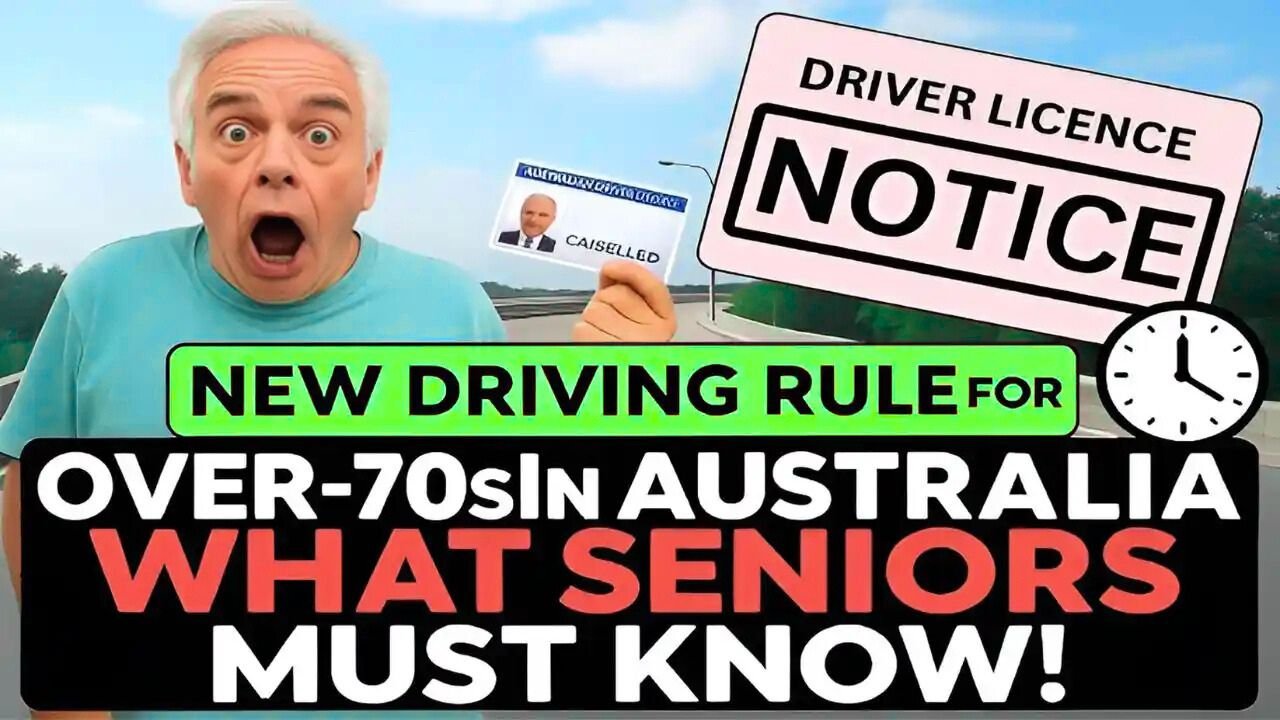From October 2025, new rules will come into effect for Australians aged 70 and above when renewing their driving licences. These changes aim to improve road safety while still allowing senior citizens to maintain their independence for as long as possible.
With thousands of older drivers across the country, it’s important for seniors and their families to understand how these changes will work, what assessments are required, and how it may affect day-to-day life.
Why Are the Rules Changing?
Authorities have been studying accident data involving older drivers. While many seniors continue to drive safely, factors like:
- Slower reaction times
- Declining eyesight or hearing
- Age-related medical conditions
…can affect road safety. The new rules are designed to strike a balance between independence and safety. Similar systems already exist in other countries, where seniors undergo more frequent checks.
What’s Changing for Over-70 Drivers?
1. New Licence Renewal Process
From October 2025, drivers over 70 will no longer be able to renew licences for long periods automatically. Instead, they will need a mandatory medical assessment to confirm their fitness to drive.
- Some states may also require vision tests or practical driving assessments.
- Assessments will determine whether seniors can continue driving without restrictions, with conditions, or not at all.
2. Medical and Fitness Checks
A doctor’s clearance will become essential for renewal. Assessments will review:
- Vision and hearing ability
- Memory and cognitive health
- Mobility and physical condition
Doctors may recommend restricted licences in some cases, such as:
- Daytime-only driving
- Driving within a certain distance from home
- Avoiding high-speed roads
3. Licence Validity Periods
Older drivers will no longer receive licences valid for 5–10 years. Instead:
- Licences will typically last 1–2 years.
- Renewals will depend on medical reports and ongoing assessments.
This ensures senior drivers are regularly reviewed for safety.
Support Measures for Seniors
The government has emphasized that the aim is not to take away independence but to ensure safety. To support seniors:
- Refresher driving courses will be available.
- Free medical check-ups may be provided in some states.
- Information sessions on safe driving for older Australians will be offered.
- Transport concessions and community transport services will help those who cannot continue driving.
How Families May Be Affected
For many families, older drivers play an important role—helping with errands, social visits, and even transporting grandchildren. With the new rules:
- Families should discuss upcoming changes early with elderly relatives.
- It may be wise to plan alternative transport options in case driving rights are restricted or removed.
FAQs
Q1: When do the new rules take effect?
From October 2025, all drivers aged 70 and above will be affected.
Q2: Do all over-70 drivers need a medical assessment?
Yes, a medical check is required before licence renewal. Some states may also require vision or driving tests.
Q3: How long will the new licences be valid?
Typically for 1–2 years, depending on medical results.
Q4: Can seniors get restricted licences instead of losing them completely?
Yes, restrictions such as daytime-only driving or limited distances may apply.
Q5: What if an older driver fails the medical assessment?
They may lose their licence, but support options like community transport and travel concessions will be available.
Final Thoughts
The new driving licence rules for Australians over 70 from October 2025 represent a significant shift in how senior drivers are monitored. With mandatory medical assessments, shorter licence validity, and possible restrictions, the goal is to keep roads safer while respecting the independence of older Australians.
For seniors, staying proactive with health checks and refresher driving courses can help maintain their mobility. Families, meanwhile, should start preparing for the changes to ensure their loved ones continue to have safe and reliable transport options.

